Papers by Daniel Grana-Behrens
Estudios de Cultura Maya, 2004
Santa Rosa Xrampak es un sitio bien conocido por su gran palacio, pero poco explorado y apenas me... more Santa Rosa Xrampak es un sitio bien conocido por su gran palacio, pero poco explorado y apenas mencionado en cuanto a sus inscripciones. El ensayo, tras abordar brevemente la historia de su descubrimiento y los avances arqueologicos, se centra en sus inscripciones, particularmente las contenidas en las estelas, que muestran rasgos locales a la vez que depatrones regionales. Si bien muestran estructuras proximas a las inscripciones de las Tierras Bajas centrales y meridionalcs, se argumenta su insercion en la tradicion propia del area del Yucatan noroccidental.
This book provides a fresh look at the principles of power and the memory of places in Mesoameric... more This book provides a fresh look at the principles of power and the memory of places in Mesoamerica. Toponyms, boundaries and landscapes play an important role in shaping local politics and peoples life’s throughout past and present. Beyond structural and conceptual similarities in calendar, rituals and religion, Mesoamerica shares a devote preference for places, sites or urban centers as distinguishable feature for collectiveness, constantly reshaped and transformed according to the historical circumstances either political, economical or religious. Thus, more than a coincidence, the importance of places over recognizable or by natives documented cultural regions in Mesoamerica seems to be a cultural pattern with deep roots lasting until today.

Estudios de Cultura Maya, Dec 5, 2016
Resumen: Los mayas del Clásico (300-1000 d.C.) usaban varios calendarios, entre ellos la llamada ... more Resumen: Los mayas del Clásico (300-1000 d.C.) usaban varios calendarios, entre ellos la llamada Cuenta de los K'atunes o K'atuno'ob, que señala un período de 20 años (k'atun) mediante el signo ajaw, costumbre que continuó existiendo durante el Posclásico. Sin embargo, aunque se conoce su mecanismo calendárico, no se ha puesto mucha atención a la presentación morfológica y sintáctica en los textos epigráficos para distinguirla de otras formas que también permiten anotar una fecha del k'atun, como el día ajaw del Tzolk'in, el cual sólo marca el último día pero no el período en sí. Además de presentar los argumentos correspondientes, esta contribución hace también hincapié en algunos rituales regionales importantes relacionados con la Cuenta de los K'atuno'ob en el Clásico, como la llamada práctica del medio k'atun, descrita aún en el siglo XVI por fray Diego de Landa, y la relación que guarda esta cuenta para referirse a gobernantes muertos y ancestros.
University of Bonn - BASA Museum, Nov 20, 2020
Ancient Mesoamerica, 2018
This paper presents new evidence for hierarchy and power among the Classic Maya (a.d.300–1000) fr... more This paper presents new evidence for hierarchy and power among the Classic Maya (a.d.300–1000) from the northern lowlands. It expands the list of identified emblem glyphs, and, more particularly, focuses on emblems with numerals by questioning their meaning and function in terms of political organization. Furthermore, the paper centers on syntax, especially on the practice of structuring personal names and titles in order to isolate titles and emblem glyphs, as well as to rank individuals and further advance our understanding of ancient Maya political organization. Finally, a dynastic sequence of rulers and noblemen from the Chan or Kan kingdom (most probably Jaina) is proposed, as well as divergent monumental traditions within the northern region and a re-evaluation of interpolity relationships.

Folklore (MUSEF) in La Paz from 2013 to 2020. In April this year she was awarded the Goethe Medal... more Folklore (MUSEF) in La Paz from 2013 to 2020. In April this year she was awarded the Goethe Medal by the German Goethe-Institut for her work. Two months later she was dismissed from her office by the Interim Government of Bolivia, which was voted out on October 18, 2020. * Karoline Noack works as Professor of Anthropology of the Americas at the University of Bonn. She is the Director of the BASA Museum (Bonn Collection of the Americas). Her research focuses on Andean societies in the longue durée, including ethnohistory and the construction of social and ethnic identities. Moreover, she concentrates her studies on (university) collections, heritage and museum studies, and university-museum-relationships, in the longue durée and in a global context. ** Daniel Grana-Behrens works as Senior Researcher in the Department for the Anthropology of the Americas and at the BASA Museum at the University of Bonn. He is a cultural anthropologist working on museum collections and provenance research, ethnohistory, memory and remembrance, death and ancestor cults, and writing and Maya epigraphy.

Price: $ 36.00 "Radical Cartographies" is a highly welcomed volume edited by Bjørn Sletto, Joe Br... more Price: $ 36.00 "Radical Cartographies" is a highly welcomed volume edited by Bjørn Sletto, Joe Bryan, Alfredo Wagner, and Charles Hale. It addresses participatory mapmaking as a means to preserve and strengthen indigenous knowledge about their past and present by reflecting on their landscapes, ancestral memories as well as ritual and agricultural practices. These aspects are ordered in space and time according to the collective experience and identity, and manifest a worldview of complex relations between humans and nonhumans quite different from what is known from Western perceptions. Besides referring rather implicitly to different types of memory (cultural, collective / social) that recall and structure past, present, and the future, the volume also indirectly addresses perceptions or perspectives that, most frequently, are analyzed within the field of "Anthropology of Ontology or Ontologies" (Kohn 2015) or "Anthropology of Nature" (Descola 2001). Radical cartography as a means of visualizing complex human and nonhuman relations in time and space thus sets out collective ontological knowledge, too. In this sense the book is a lesson on how others relate and interact with the world in a sustainable way by bridging space and time. In addition to an introduction explaining the concept of radical cartographies as a useful social tool, the book exemplifies indigenous practices from Mesoamerica and South America in eleven ethnographic case studies divided up into three parts. The volume ends with a commentary by Joe Bryan centering on what is a territory from the indigenous point of view (more a relationship of things than a bounded and closed-up thing), and an afterword by Charles Hale. In the introduction, Bjørn Sletto makes clear that mapmaking is not an exclusively Western instrument to structure the world but has been a practice among indigenous people in Latin America throughout the colonial period, with roots in pre-Hispanic times. Nonetheless, there is a "more recent boom in participatory mapping" from the 1980s onwards as part of collaborative or participatory anthropology (7). As the author clarifies, this boom is "driven in large part by the inhabitants of the territories themselves rather than by Western scholars or NGOs" (2). However, as can be learned from the ethnographic case studies in this volume, anthropologists, NGOs or representatives from other institutions may accompany or support such participatory mapping. The process of participatory mapmaking, whether driven by the inhabitants themselves or supported by third-party persons or institutions like anthropologists or NGOs, may have different consequences, as
. To change place: Aztec ceremonial landscapes. Boulder: University of Colorado.
Estudios De Cultura Nahuatl, 2009
Politische Herrschaft jenseits des Staates, 2011

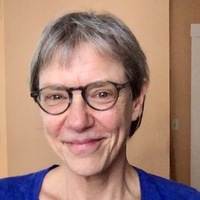



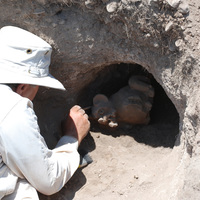

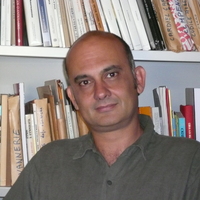
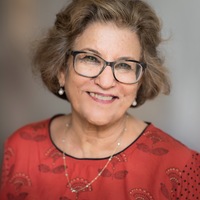

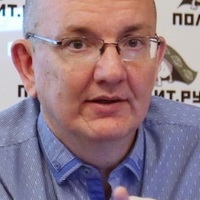
Uploads
Papers by Daniel Grana-Behrens